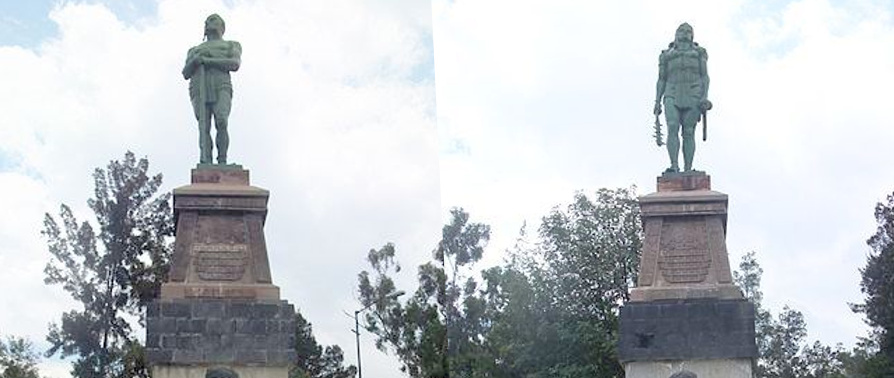
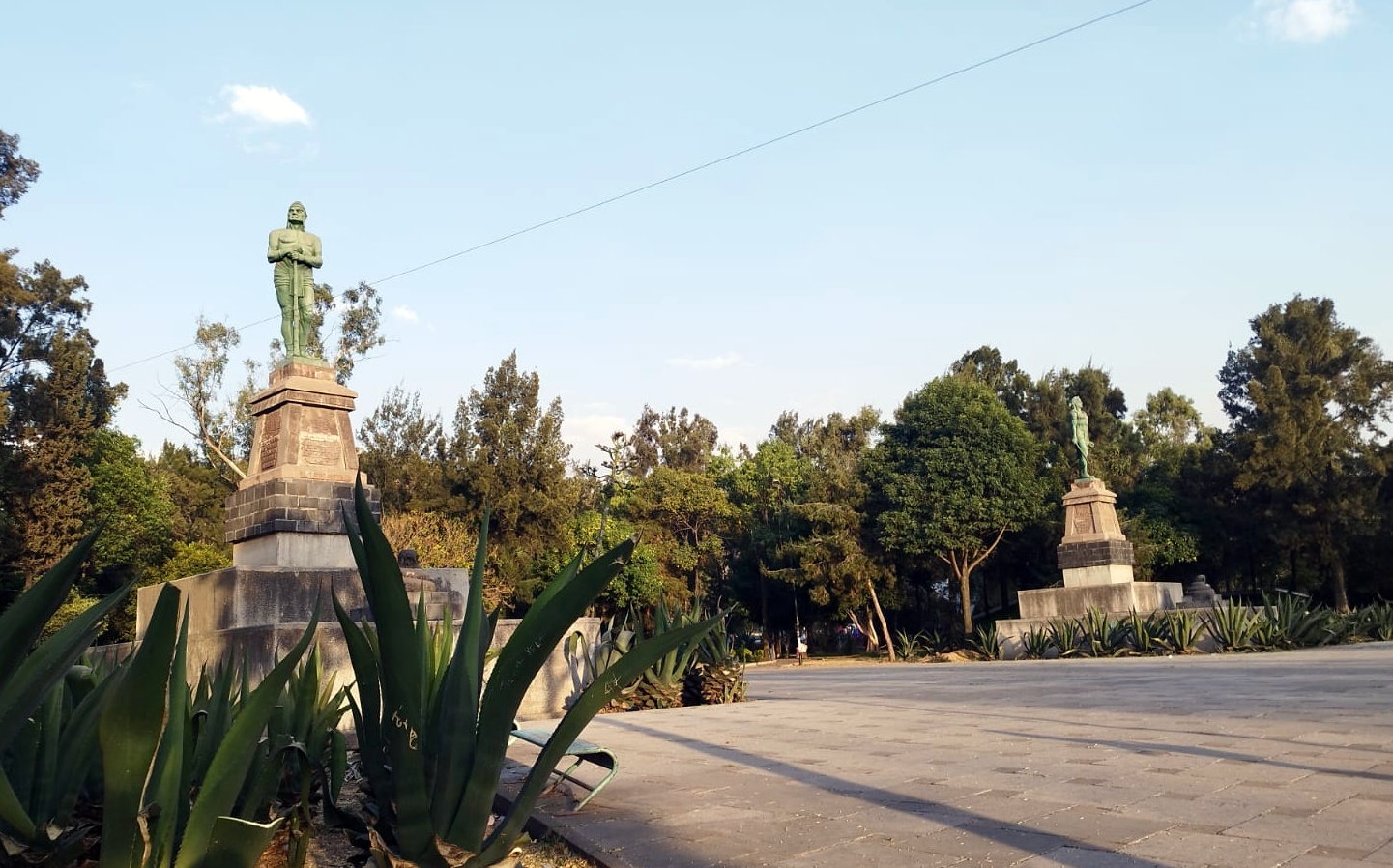
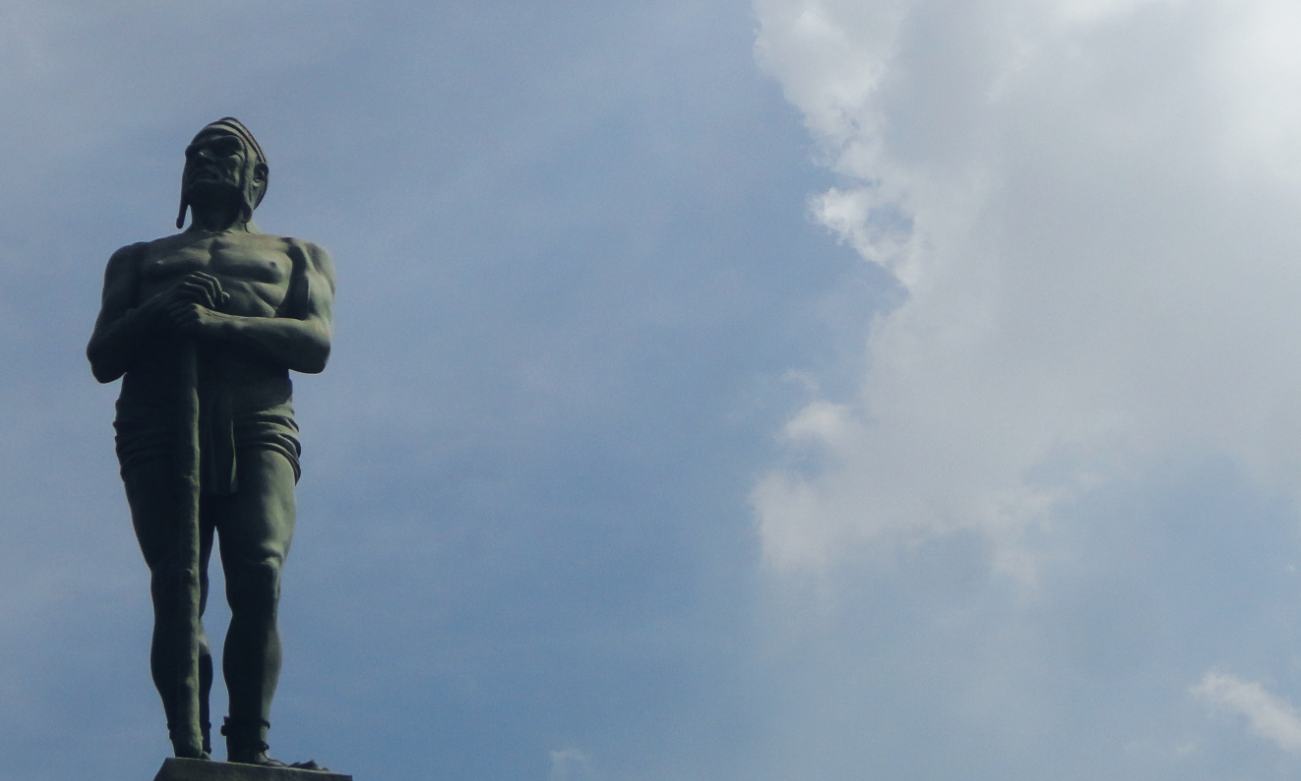
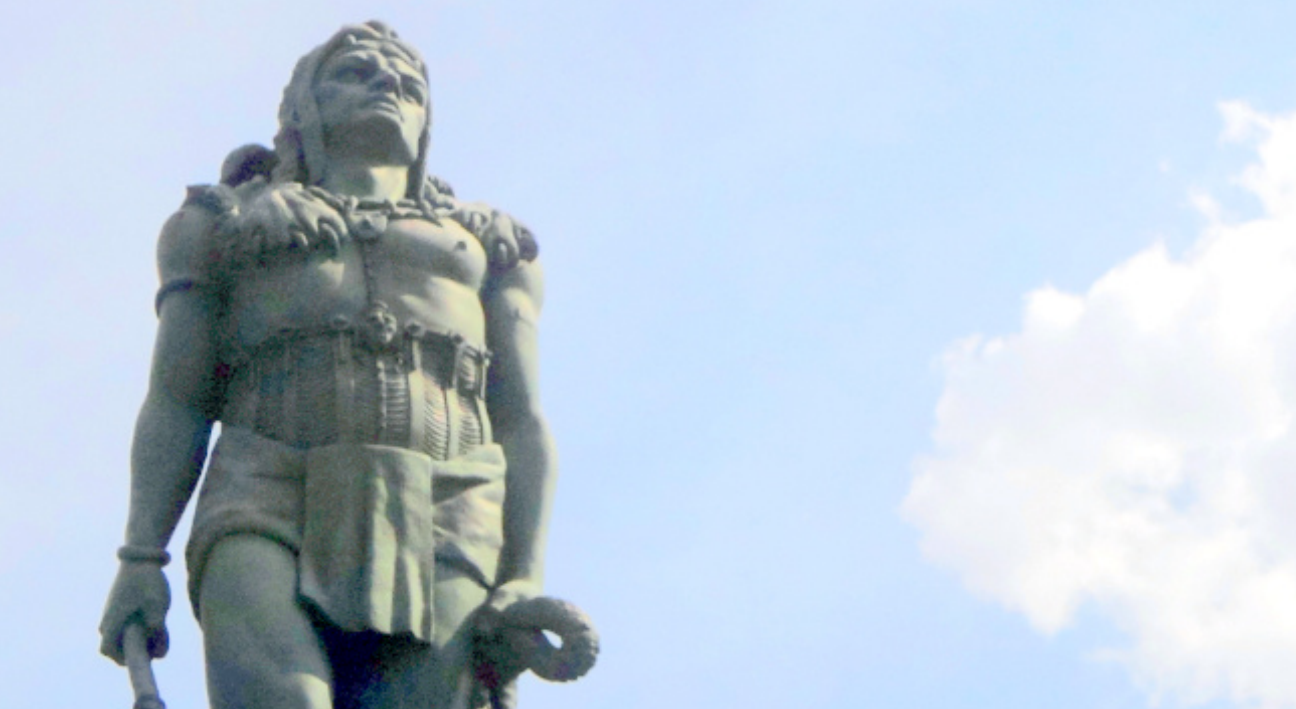
Photos: GAED, Attribution-ShareAlike 3.0 Unported
Indios Verdes no sólo se refiere a las estaciones del Metro y Metrobús. Incluso más allá de eso, Indios Verdes puede usarse para referirse a gran parte de la región norte de la ciudad y el área metropolitana.
Las dos esculturas del monumento representan a los Tlatoanis Mexicas (Tlatoani significa “rey”), Itzcóatl y Ahuizotl.
Fundidos en bronce por el artista Casarín, estaban destinados a representar a México en la Exhibición Universal en París en 1889. Las inscripciones y grabados al pie de cada una están escritas en náhuatl, lengua originaria de los mexicas.
Finalmente, como las dos estatuas tienen entre tres y cuatro metros de alto y cada una pesa 3 toneladas, se decidió no enviarlas a Francia.
Itzcóatl – cuyo nombre a veces se traduce como “la serpiente de obsidiana”, reinó sobre Tenochtitlan de 1428 a 1440. Al cuarto Tlatoani se le recuerda como un padre, un reformador religioso, y como un gobernante que venció a los tepanecas de Azcapotzalco, a pesar de que su madre era del pueblo tepaneca.
Elegido Tlatoani en 1427, se dice que formó alianzas tanto con Tlacopan como con Texcoco. Al aliarse con Nezahualcóyotl de Texcoco, Itzcóatl le recordó que el gobernante de Texcoco había estado refugiado muchos años en Tenochtitlan. La Triple Alianza Resultante, que incluía a Tlacopan, había eliminado en 1428 a Azcapotzalco como un serio rival militar. El mando militar se concentró entonces en Tenochtitlán.
Bajo Itzcóatl, la Triple Alianza extendería en la década de 1430, un control casi completo sobre el Valle de México, incluidos Coyohuacan en 1430, Tláhuac en 1433, y Cuauhnáhuac en 1439.
Itzcóatl también es recordado por las significativas reformas y consolidaciones hechas a las prácticas y creencias religiosas durante su reinado. Fue sucedido por Moctezuma Ilhuicamina, es decir, Moctezuma I
Ahuízotl – cuyo nombre se puede traducir como “espinas de río”, fue sacerdote, político, líder militar y el octavo Tlatoani. Gobernó de 1486 hasta su muerte en 1502. Es recordado por haber expandido el gobierno de la Triple Alianza para cubrir casi todos los territorios del centro y sur de lo que hoy es México, además de Guatemala.
También se sabe que Ahuízotl, un diplomático experto, expandió el comercio para incluir el intercambio con casi todos los pueblos bajo su control. Se cree que su muerte se debió a la falla de un acueducto que había construido para llevar agua de Coyoacán a Tenochtitlán. Un monolito con su inscripción se encontró en el centro de la ciudad apenas en el 2006.
Ahuízotl, fue sucedido por su sobrino Moctezuma Xocoyotzin, es decir; Moctezuma II.
Debido a que las estatuas no fueron enviadas a París, se decidió colocarlsa sobre Paseo de la Reforma. Para 1902, fueron transferidas a un costado de Calzada de la Viga y para 1920, fueron nuevamente removidas, en esta ocasión a Insurgentes Norte, precisamente en donde la avenida cruza con el antiguo Acueducto de Guadalupe. Pero no sería su morada final. En 1979, una nueva estación del Metro, que ya tenía el mismo nombre, “Metro Indios Verdes,” implicó que las estatuas homónimas se trasladaran al sur. Lo mismo ocurrió nuevamente con la construcción de la estación de Metrobús en 2005, cuando fueron nuevamente trasladados al cercano Parque del Mestizaje.
Si bien, aunque ambas esculturas nunca fueron populares, e incluso llegaron a ser conocidas como “los verdes” gracias a la primera pátina que adquirió el bronce con el paso del tiempo y el clima, en su nuevo hogar, en el Parque Mestizaje, el monumento por fin está obteniendo la segunda mirada que merece.
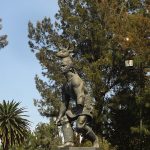
Cercano a 0.07 kms.
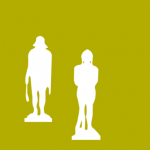
Cercano a 0.28 kms.
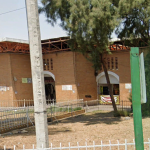
Cercano a 0.36 kms.

Uno de los barrios de mayor elevación de la Ciudad de México...

Nueva vida llega a uno de los pueblos originarios de la GAM, en el extremo norte de la Ciudad de México.

La estación de transferencia a los dos destinos finales de la Línea 1 de Cablebús.

La línea 1 del Cablebús te puede dejar en las faldas del famoso Cerro del Chiquihuite...

La estación de Cablebús Ticomán es solo la primera parada en tu camino hacia el norte de la Ciudad de México.